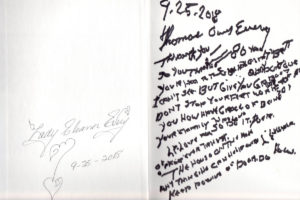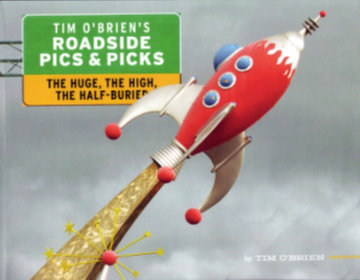 The subject of my most recent book review was also a photobook and it also included things at roadside, but the similarity doesn’t go much further. That other book (A Matter of Time) dealt with a specific highway. This one features stuff beside a bunch of different highways and exactly which highway is hardly ever important. Maybe that hints at the basic difference between the two books. (And before I write it out loud let me say I’m a big fan of both approaches.) One book is serious; The other is fun.
The subject of my most recent book review was also a photobook and it also included things at roadside, but the similarity doesn’t go much further. That other book (A Matter of Time) dealt with a specific highway. This one features stuff beside a bunch of different highways and exactly which highway is hardly ever important. Maybe that hints at the basic difference between the two books. (And before I write it out loud let me say I’m a big fan of both approaches.) One book is serious; The other is fun.
To continue my comparison of the two books just one gratuitous step further, one identifies with fine art and proceeds to deliver. The other book also mentions fine art but it’s really just in passing. Here’s what O’Brien says:
I am not a studio photographer. I am not a fine arts photographer. I am here to document something.
There aren’t all that many more words in O’Brien’s book. There’s a foreword from RoadsideAmerica.com’s Doug Kirby and an introduction of sorts, titled “Prelude to an Exhibition”, from O’Brien. I lifted the quote from there. The rest is almost all images. Collections of similar items and sites with multiple photos get a few descriptive paragraphs. Individual photos are captioned with their location only. There is no narrator.
I’ve probably milked all I can from the coincidental reviewing of two photobooks in a row so let’s take a serious look at this fun book. It is softcovered. All images are printed in full color which allows them to “document something” quite well. It is divided into sections for the three categories promised by the subtitle plus a bonus fourth.
 The bonus section comes first. “Roadside Art Parks” documents seven of the more famous examples of the genre with quite a few pictures of each. I got an exaggerated opinion of my own worldliness when I counted two of the first three as ones I’d visited. I was put back in my proper place when I ended the section with a score of 3 out of 7.
The bonus section comes first. “Roadside Art Parks” documents seven of the more famous examples of the genre with quite a few pictures of each. I got an exaggerated opinion of my own worldliness when I counted two of the first three as ones I’d visited. I was put back in my proper place when I ended the section with a score of 3 out of 7.
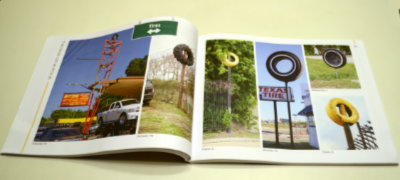 The “high” of the subtitle appears next in “Things-On-A-Pole”. I’d quickly learned my lesson and made no attempt to count and compare what I’d seen. In addition to tires, there are pictures of elevated fish, airplanes, cars, trucks, boats, etc. Et cetera includes a category labeled “Stuff”.
The “high” of the subtitle appears next in “Things-On-A-Pole”. I’d quickly learned my lesson and made no attempt to count and compare what I’d seen. In addition to tires, there are pictures of elevated fish, airplanes, cars, trucks, boats, etc. Et cetera includes a category labeled “Stuff”.
 In addition to famous installations such as Cadillac Ranch, Carhenge, and the sadly vanished Airstream Ranch, “Half-Buried” includes quite a few of the not so well known examples of things poking out of the ground. The pages pictured at left show a personal favorite. When I visited Combine City in 2007, there were ten retired machines planted in the Texas field. There are fourteen in O’Brien’s description so it apparently kept growing for at least a while. On the other hand, the dedicated website that existed in 2007 has gone missing.
In addition to famous installations such as Cadillac Ranch, Carhenge, and the sadly vanished Airstream Ranch, “Half-Buried” includes quite a few of the not so well known examples of things poking out of the ground. The pages pictured at left show a personal favorite. When I visited Combine City in 2007, there were ten retired machines planted in the Texas field. There are fourteen in O’Brien’s description so it apparently kept growing for at least a while. On the other hand, the dedicated website that existed in 2007 has gone missing.
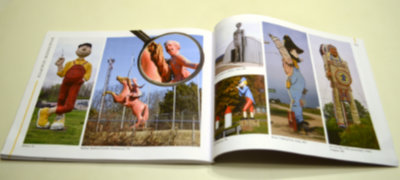 Section four, “Roadside Giants” fulfills the promise of the subtitle’s “huge”. There are subcategories like animals, donuts, people, and the ever-popular stuff. The donuts category offers a find-the-bagel challenge you can play at home.
Section four, “Roadside Giants” fulfills the promise of the subtitle’s “huge”. There are subcategories like animals, donuts, people, and the ever-popular stuff. The donuts category offers a find-the-bagel challenge you can play at home.
I met Tim O’Brien at the 2019 Society for Commercial Archeology conference where I learned just enough about his career as a photojournalist to become jealous. He spent years in public relations for Ripley’s Believe it or Not!, more years editing Amusement Business magazine, and even more years free-lancing and authoring his own books. Those years were often overlapping. Maybe some of the photos in Roadside Pics & Picks are outtakes from past projects. Maybe some are from side trips slipped into totally unrelated assignments. In fact, both situations seem rather likely. Something that seems absolutely certain, regardless of how he came to photograph each of these huge, high, and half-buried pieces of roadside art, is that he was having fun doing it. Also certain is the fact that I had fun looking at the pictures regardless of whether they brought back memories, triggered an addition to my To-Do list, or made me mourn something that’s gone. And it made me jealous again.
Tim O’Brien’s Roadside Pics & Picks: The Huge, the High, the Half-Buried, Tim Obrien, Casa Flamingo Literary Arts, April 24, 2020, 11 x 8.5 inches, 174 pages, ISBN 978-0996750455
Available through Amazon.




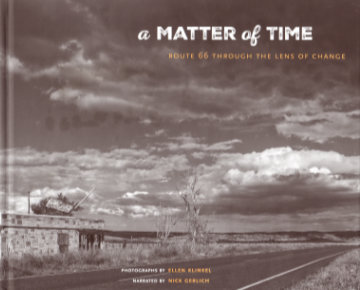 There’s not much point in counting the number of books published about Route 66; The likelihood that the count would increase before you were done is just too great. An Amazon search simply says “over 2,000”. So why review this one? What sets it apart from the others? The most obvious reason for reviewing it is a simple one: I know one of the people whose name is on the cover. The things that set it apart are not as obvious (or benignly biased). In fact, I’ve only found one thing about the book that I think is actually unique, and I’m not really sure about that. The book has no author; It has a narrator.
There’s not much point in counting the number of books published about Route 66; The likelihood that the count would increase before you were done is just too great. An Amazon search simply says “over 2,000”. So why review this one? What sets it apart from the others? The most obvious reason for reviewing it is a simple one: I know one of the people whose name is on the cover. The things that set it apart are not as obvious (or benignly biased). In fact, I’ve only found one thing about the book that I think is actually unique, and I’m not really sure about that. The book has no author; It has a narrator.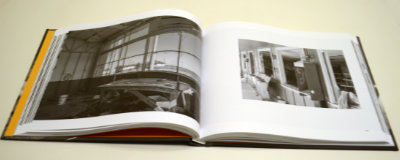 The photos are black and white, which is unusual but not unique. What may be unique is how they came to be at all. Klinkel tells that story in the book’s preface. It begins in 2013. She lives in Germany and was in the western U.S. with her husband for a four-week vacation which she describes as “the first time I ever had a serious camera in my hands”. Planned visits to several national parks fell victim to the sixteen-day government shutdown in October of that year and driving a portion of Route 66 was substituted. Klinkel credits this very first time on the historic highway coupled with the “serious camera” as having “instantly sparked my passion for photography”.
The photos are black and white, which is unusual but not unique. What may be unique is how they came to be at all. Klinkel tells that story in the book’s preface. It begins in 2013. She lives in Germany and was in the western U.S. with her husband for a four-week vacation which she describes as “the first time I ever had a serious camera in my hands”. Planned visits to several national parks fell victim to the sixteen-day government shutdown in October of that year and driving a portion of Route 66 was substituted. Klinkel credits this very first time on the historic highway coupled with the “serious camera” as having “instantly sparked my passion for photography”. Most, but far from all, of the photos are of places I recognize from my own travels on Sixty-Six, and some of those nearly reproduce visions I’ve had myself. There are plenty of pictures of places I do not recognize. Sometimes that’s because they are from a location where I’ve never stopped or maybe even passed, but sometimes it’s because Klinkel sees and shares a vision that never occurred to me even though I’ve stood at or near the very spot she did. I don’t mean to imply that I expected anything else. It’s great to be shown something you’ve never seen, but it can be even better to be shown something known in a new way. Although it is a place I instantly recognized, a favorite example of being shown something in a new way is the early morning shot of the Bagdad Cafe with the coming sun just a tiny but significant twinkle. Another is the low-level shot of a protective wall of tires at a long-abandoned gas station at Texas Exit 0 of I-40.
Most, but far from all, of the photos are of places I recognize from my own travels on Sixty-Six, and some of those nearly reproduce visions I’ve had myself. There are plenty of pictures of places I do not recognize. Sometimes that’s because they are from a location where I’ve never stopped or maybe even passed, but sometimes it’s because Klinkel sees and shares a vision that never occurred to me even though I’ve stood at or near the very spot she did. I don’t mean to imply that I expected anything else. It’s great to be shown something you’ve never seen, but it can be even better to be shown something known in a new way. Although it is a place I instantly recognized, a favorite example of being shown something in a new way is the early morning shot of the Bagdad Cafe with the coming sun just a tiny but significant twinkle. Another is the low-level shot of a protective wall of tires at a long-abandoned gas station at Texas Exit 0 of I-40. However, something clicked on a rereading of that preface that hadn’t quite registered on the first pass. Klinkel explains the title quite clearly:
However, something clicked on a rereading of that preface that hadn’t quite registered on the first pass. Klinkel explains the title quite clearly: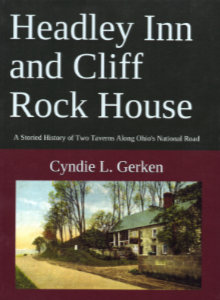 Cyndie Gerken’s third big helping of National Road knowledge was served up a bit more than a year ago, and I have no good excuse, or even enough bad ones, to account for waiting so long to take a look. Of course, once I did, the same accuracy and thoroughness that marked her earlier books were instantly apparent in this one. In 2015, she documented Ohio’s National Road mile markers with
Cyndie Gerken’s third big helping of National Road knowledge was served up a bit more than a year ago, and I have no good excuse, or even enough bad ones, to account for waiting so long to take a look. Of course, once I did, the same accuracy and thoroughness that marked her earlier books were instantly apparent in this one. In 2015, she documented Ohio’s National Road mile markers with 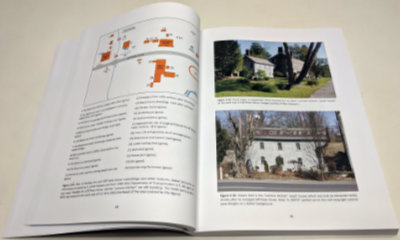 Both of the book’s subjects appeared almost immediately after the National Road passed by the land they would occupy. The first section of the Cliff Rock House was completed in 1830 and the Headley Inn’s first section in 1833. Other dates have appeared in articles and even on signs but Gerken sorts through the various claims and presents a solid case for these dates. Both structures have been enlarged and modified over the years. Despite their nearness to each other, the inns were constructed and operated independently by two separate families. That has not always been the case although it is again today.
Both of the book’s subjects appeared almost immediately after the National Road passed by the land they would occupy. The first section of the Cliff Rock House was completed in 1830 and the Headley Inn’s first section in 1833. Other dates have appeared in articles and even on signs but Gerken sorts through the various claims and presents a solid case for these dates. Both structures have been enlarged and modified over the years. Despite their nearness to each other, the inns were constructed and operated independently by two separate families. That has not always been the case although it is again today.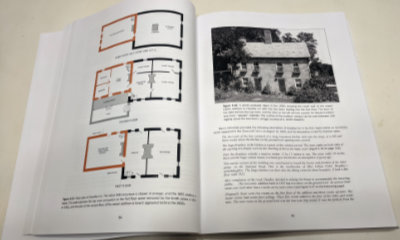 It is generally thought that the Headley Inn initially served as a stagecoach stop while the larger Cliff Rock House catered more to drovers herding sheep and other animals to market. That sort of division was never iron clad, of course, but that kind of thinking does serve to justify the two businesses being so close.
It is generally thought that the Headley Inn initially served as a stagecoach stop while the larger Cliff Rock House catered more to drovers herding sheep and other animals to market. That sort of division was never iron clad, of course, but that kind of thinking does serve to justify the two businesses being so close.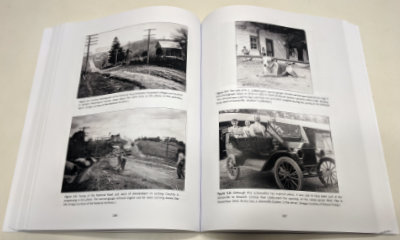 Living memory provides even more input to the post-tearoom era and here the living memory is sometimes Gerken’s own although it is more often her personal interviews with the short series of owners. The book is heavily illustrated with historical photos, maps, diagrams, newspaper clippings, and more. Modern photos include many taken by the author herself.
Living memory provides even more input to the post-tearoom era and here the living memory is sometimes Gerken’s own although it is more often her personal interviews with the short series of owners. The book is heavily illustrated with historical photos, maps, diagrams, newspaper clippings, and more. Modern photos include many taken by the author herself.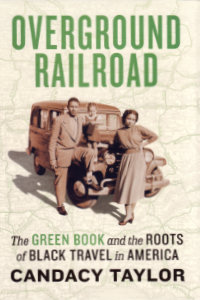 “This is not a book about the history of road-tripping and black travel”, is the first sentence of the last paragraph of the introduction. That’s something I knew long before I read it. It was something Candacy Taylor said early in the presentation I attended in Indianapolis back in February. It may even have been something she said during another presentation of hers I attended back in 2016. I discovered Taylor the same way she discovered the Green Book. Well, not exactly the same way. She learned of the Green Book while doing research for a Moon Travel Guide on Route 66. I learned of Candacy Taylor as a mere attendee at a conference on the historic road. Research for the book was well underway when Taylor spoke at that conference in Los Angeles but Overground Railroad: The Green Book and the Roots of Black Travel in America was still a concept. It was a reality when she spoke in Indianapolis, and that’s where I acquired my copy.
“This is not a book about the history of road-tripping and black travel”, is the first sentence of the last paragraph of the introduction. That’s something I knew long before I read it. It was something Candacy Taylor said early in the presentation I attended in Indianapolis back in February. It may even have been something she said during another presentation of hers I attended back in 2016. I discovered Taylor the same way she discovered the Green Book. Well, not exactly the same way. She learned of the Green Book while doing research for a Moon Travel Guide on Route 66. I learned of Candacy Taylor as a mere attendee at a conference on the historic road. Research for the book was well underway when Taylor spoke at that conference in Los Angeles but Overground Railroad: The Green Book and the Roots of Black Travel in America was still a concept. It was a reality when she spoke in Indianapolis, and that’s where I acquired my copy.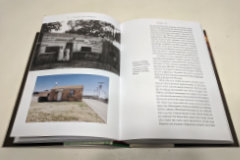 Overground Railroad is heavily illustrated. Taylor’s research for this project included cataloging and visiting businesses listed in the Green Book, and several of her photographs of sites that remain appear throughout the book. She also includes some personal photos. Numerous historic photos along with reproductions from the Green Book accompany the text. A section in the back of the book lists surviving “Green Book sites” and includes Taylor’s photos of many. It is followed by a section with reproductions of every known Green Book cover other than the very first edition of 1936.
Overground Railroad is heavily illustrated. Taylor’s research for this project included cataloging and visiting businesses listed in the Green Book, and several of her photographs of sites that remain appear throughout the book. She also includes some personal photos. Numerous historic photos along with reproductions from the Green Book accompany the text. A section in the back of the book lists surviving “Green Book sites” and includes Taylor’s photos of many. It is followed by a section with reproductions of every known Green Book cover other than the very first edition of 1936.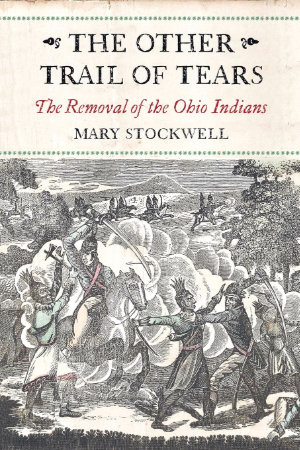 I read this book by accident and belatedly. The accident comes from a spontaneous purchase. The belated reading comes from me not realizing how good it is. I picked the book up back in June of 2018 when I went to hear Mary Stockwell talk on her just-published
I read this book by accident and belatedly. The accident comes from a spontaneous purchase. The belated reading comes from me not realizing how good it is. I picked the book up back in June of 2018 when I went to hear Mary Stockwell talk on her just-published  There are things that fans of old roads or of transportation history in general falsely assume that everyone knows about. One such item is the continent crossing Motor Transport Corps convoy of 1919. In the summer following the end of the first World War, a group of military personnel and vehicles set off from Washington, DC, to test the nation’s roads all the way to San Francisco. Although he was primarily an observer on the trip, his future accomplishments make Dwight Eisenhower the member of the convoy best-known today. Michael Owen uses the future president’s nickname in naming this telling of his own retracing of the 3,250-mile-long path that some 300 men and 81 vehicles of all shapes and sizes followed a century ago.
There are things that fans of old roads or of transportation history in general falsely assume that everyone knows about. One such item is the continent crossing Motor Transport Corps convoy of 1919. In the summer following the end of the first World War, a group of military personnel and vehicles set off from Washington, DC, to test the nation’s roads all the way to San Francisco. Although he was primarily an observer on the trip, his future accomplishments make Dwight Eisenhower the member of the convoy best-known today. Michael Owen uses the future president’s nickname in naming this telling of his own retracing of the 3,250-mile-long path that some 300 men and 81 vehicles of all shapes and sizes followed a century ago.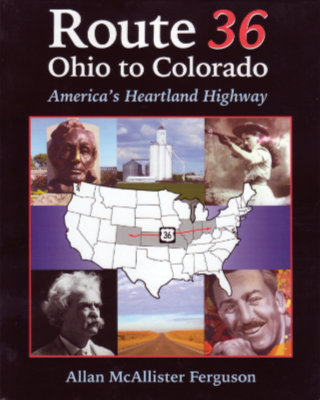 US-36 is kind of special to me. It is one of just a handful of US highways with an endpoint in my home state and one of just two that pass through my birth county. It’s even more special to Allan Ferguson. He grew up near the route in Illinois, has ancestral connections to the eastern end in Ohio, and currently lives near its western end in Colorado. It has had a role in much of his life from childhood vacations and visits to relatives to business trips and drives between old and new homes as an adult. Not all of his travels between Colorado and Illinois have been on Route 36. Not surprisingly, his early trips back home were on expressways. At some point, he tried US-36 and came to realize three things. The first was that it took no more time than driving the interstates. Between Denver and central Illinois, the US-36 is quite straight and about 100 miles shorter than either I-70 or I-80. Secondly, it was relaxing rather than stressful. The third thing he realized was that the drive was actually interesting and that realization eventually led to this book.
US-36 is kind of special to me. It is one of just a handful of US highways with an endpoint in my home state and one of just two that pass through my birth county. It’s even more special to Allan Ferguson. He grew up near the route in Illinois, has ancestral connections to the eastern end in Ohio, and currently lives near its western end in Colorado. It has had a role in much of his life from childhood vacations and visits to relatives to business trips and drives between old and new homes as an adult. Not all of his travels between Colorado and Illinois have been on Route 36. Not surprisingly, his early trips back home were on expressways. At some point, he tried US-36 and came to realize three things. The first was that it took no more time than driving the interstates. Between Denver and central Illinois, the US-36 is quite straight and about 100 miles shorter than either I-70 or I-80. Secondly, it was relaxing rather than stressful. The third thing he realized was that the drive was actually interesting and that realization eventually led to this book.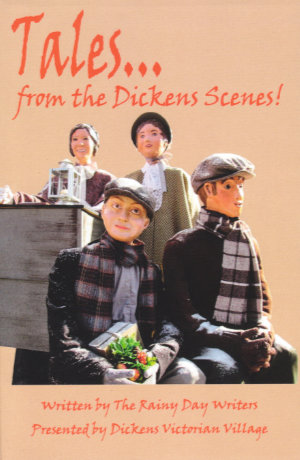 This book is unusual and unusually good. The Dickens Scenes of the title are those in Cambridge, Ohio, that starred in this blog’s most recent regular weekly post. There are currently 94 of those scenes and each began life as a sketch by a fellow named Bob Ley. Bob is one of a group of writers, known as
This book is unusual and unusually good. The Dickens Scenes of the title are those in Cambridge, Ohio, that starred in this blog’s most recent regular weekly post. There are currently 94 of those scenes and each began life as a sketch by a fellow named Bob Ley. Bob is one of a group of writers, known as 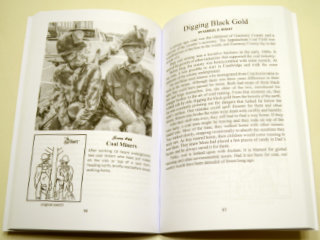 The individual photos are not credited but acknowledgments at the front of the book identify Tom Davey and Lindy Thaxton as the photographers. The photos are all quite good and do a nice job of capturing each scene from its best vantage point. Together, the book’s even-numbered (i.e., lefthand) pages make up the sort of catalog often prepared for a museum display. The village really is such a display with the sidewalks of Cambridge forming the museum.
The individual photos are not credited but acknowledgments at the front of the book identify Tom Davey and Lindy Thaxton as the photographers. The photos are all quite good and do a nice job of capturing each scene from its best vantage point. Together, the book’s even-numbered (i.e., lefthand) pages make up the sort of catalog often prepared for a museum display. The village really is such a display with the sidewalks of Cambridge forming the museum. Sometimes I astound my friends with my knowledge, admittedly quite useless, of unusual and obscure roadside attractions. Othertimes I astound myself with my complete ignorance of a major and fairly well-known piece of public art.
Sometimes I astound my friends with my knowledge, admittedly quite useless, of unusual and obscure roadside attractions. Othertimes I astound myself with my complete ignorance of a major and fairly well-known piece of public art. 